BACK TO finale_winnerS
Nippon Paint Colour Award: Interior Design Category
PHU QUOC RESORT
PHU QUOC RESORTMYTHOLOGY OF THE FIRST ISLANDER PROBLEM STATEMENT Phu Quoc, an island located in the south of Vietnam, has emerged as a significant economic driver for the nation, widely recognized as the "Island of Tourism" and the "International Island". Although tourism and local communities have only begun to develop over the past thirty years, […]
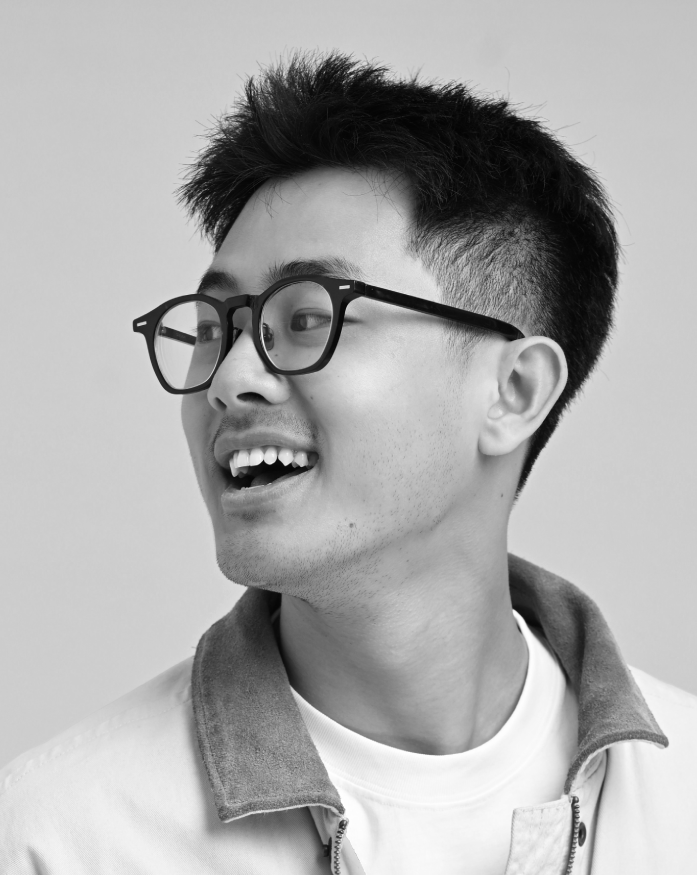
PHU QUOC RESORT
MYTHOLOGY OF THE FIRST ISLANDER
PROBLEM STATEMENT
Phu Quoc, an island located in the south of Vietnam, has emerged as a significant economic driver for the nation, widely recognized as the "Island of Tourism" and the "International Island". Although tourism and local communities have only begun to develop over the past thirty years, large-scale investments from domestic corporations and foreign entities have rapidly transformed the island. However, Phu Quoc now faces an alarming cultural decline, as an overwhelming number of resorts and entertainment complexes built with exotic Western concepts increasingly dominate the island. Meanwhile, local identities and the sustainable development of indigenous communities are receiving diminishing attention.
DESIGN DIRECTION
By incorporating local folktales, this project illustrates how each region around the world can adapt its unique stories into spatial design, reflecting and weaving together the region’s natural and social characteristics. To embrace local elements while addressing the global context. In doing so, the project aims to preserve the valuable traditions of the local community, contribute to the social welfare of the islanders. Also foster economic development, and introduce the island’s emerging culture to the world.
DESIGN CONCEPT
Four stories of the establishment for the island’s civilization are selected to be incorporated into four main spaces, each representing a distinct characteristic, collectively creating a comprehensive picture of the island's culture.
The First Step – Call To Prayer
The Main Lodge Area -will tell the story of the tradition of offering prayers for peace and safety.
The Second Step – Reclamation & Cultivation
All-Day Dining Restaurant represents the products of the land cultivation process, showcasing local specialties.
Multi-purpose Workshop Area is used to engage the local people to teach the customers about the island’s art-craft and food tutor.
The Third Step – Animal Domestication
The wild animal has been tamed into a loyal companion.
The Beach Villa will honor the story of the islander’s settlement and the domestication of the Phu Quoc dog – one of Vietnam's Four Sacred Dogs – guarding the sleep of the pioneers.
Beach Children’s Playground – representing daytime interaction – uses an edutainment approach that allows children to play and learn about the island’s unique animals. This space also enables the Phu Quoc puppies to interact with visitors.
The Fourth Step – Human Well-being
The Treatment Area highlights the abundance of the Phu Quoc National Forest – the largest herbal medicine treasure in Southwestern Vietnam, and the first island herbalist who cared for the well-being of the island’s residents.
Moreover, the spaces in this project aim to create a sense of connect where customers can interact with the local people, listen to their stories about the island, and immerse themselves in the daily way of life. Ultimately, the design of this resort serves as a bridge to spark curiosity and interest. At its core, it encourages visitors to want to witness the cultural characteristics and traditional crafts firsthand outside of the resort, contributing to the growth of local tourism.
ENDING
Although Phu Quoc is a relatively new hotspot for tourists, the awareness of cultural preservation is genuine. The culture of a region is a blend of social and natural elements that cannot be separated.
This challenge is not unique to this southern island of Vietnam; it is a global concern, particularly in regions where local identities have not yet been fully established.
Therefore, to reach out to the world and face great waves, we must first anchor ourselves firmly in the
deep roots of our local heritage.
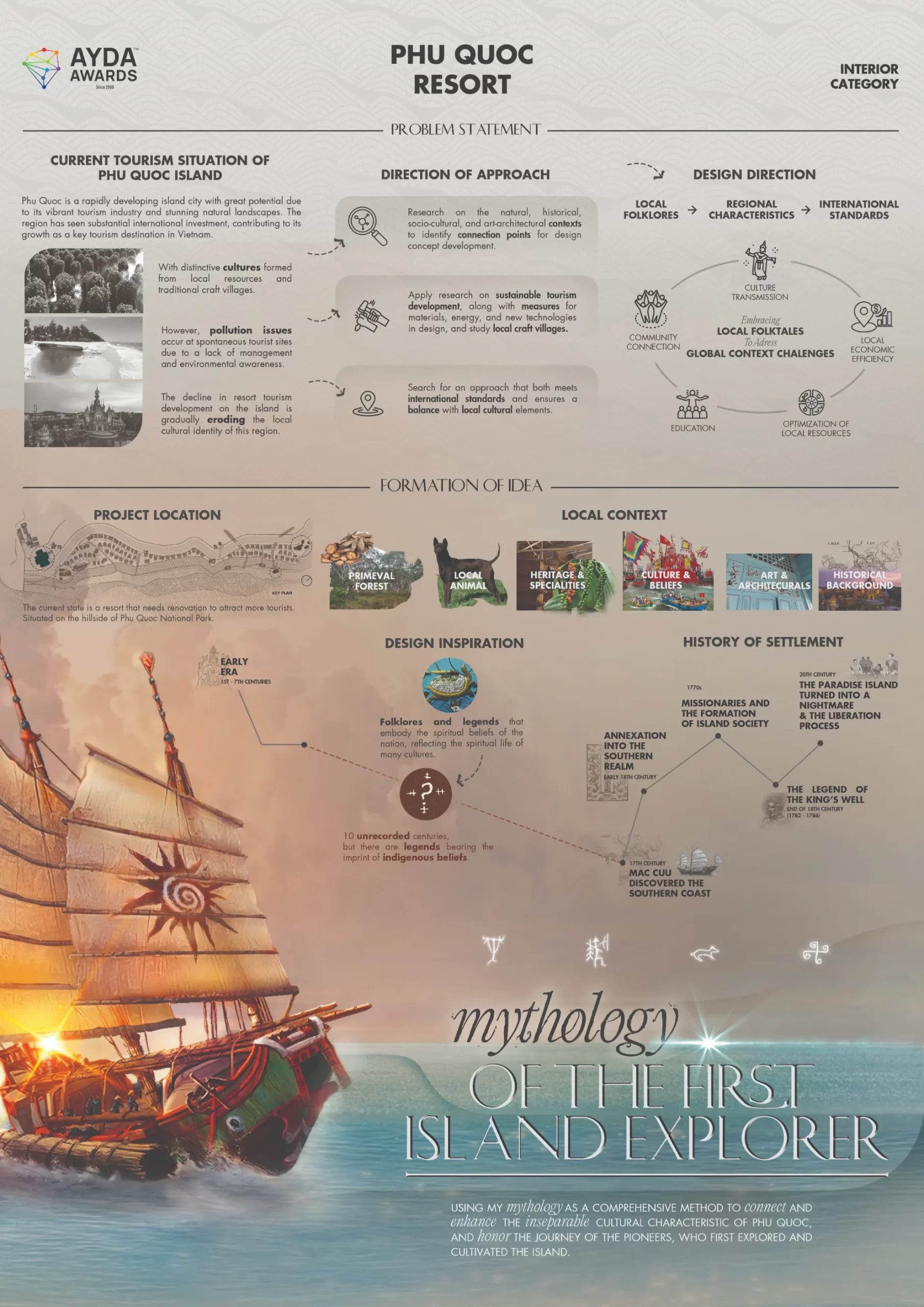
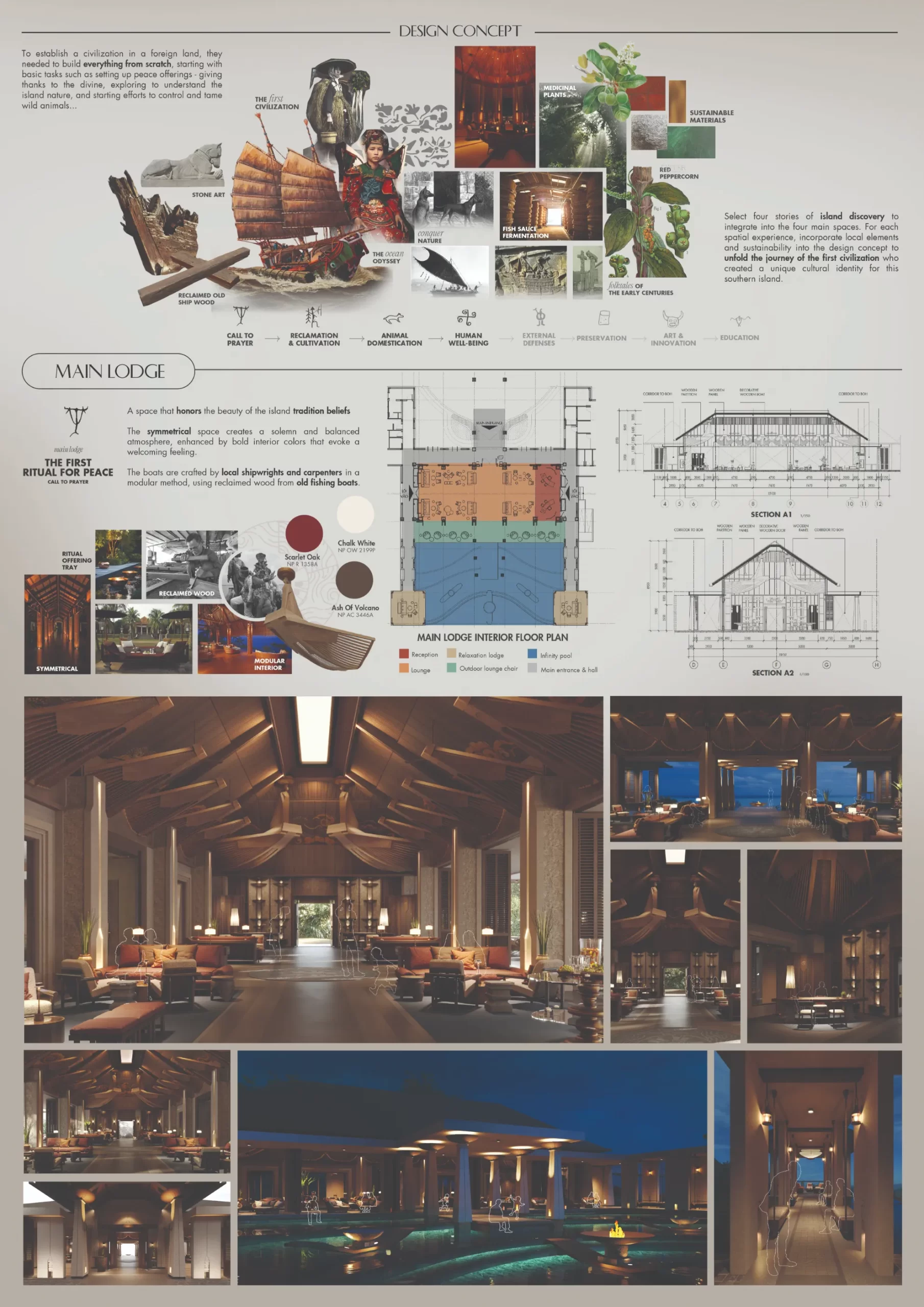
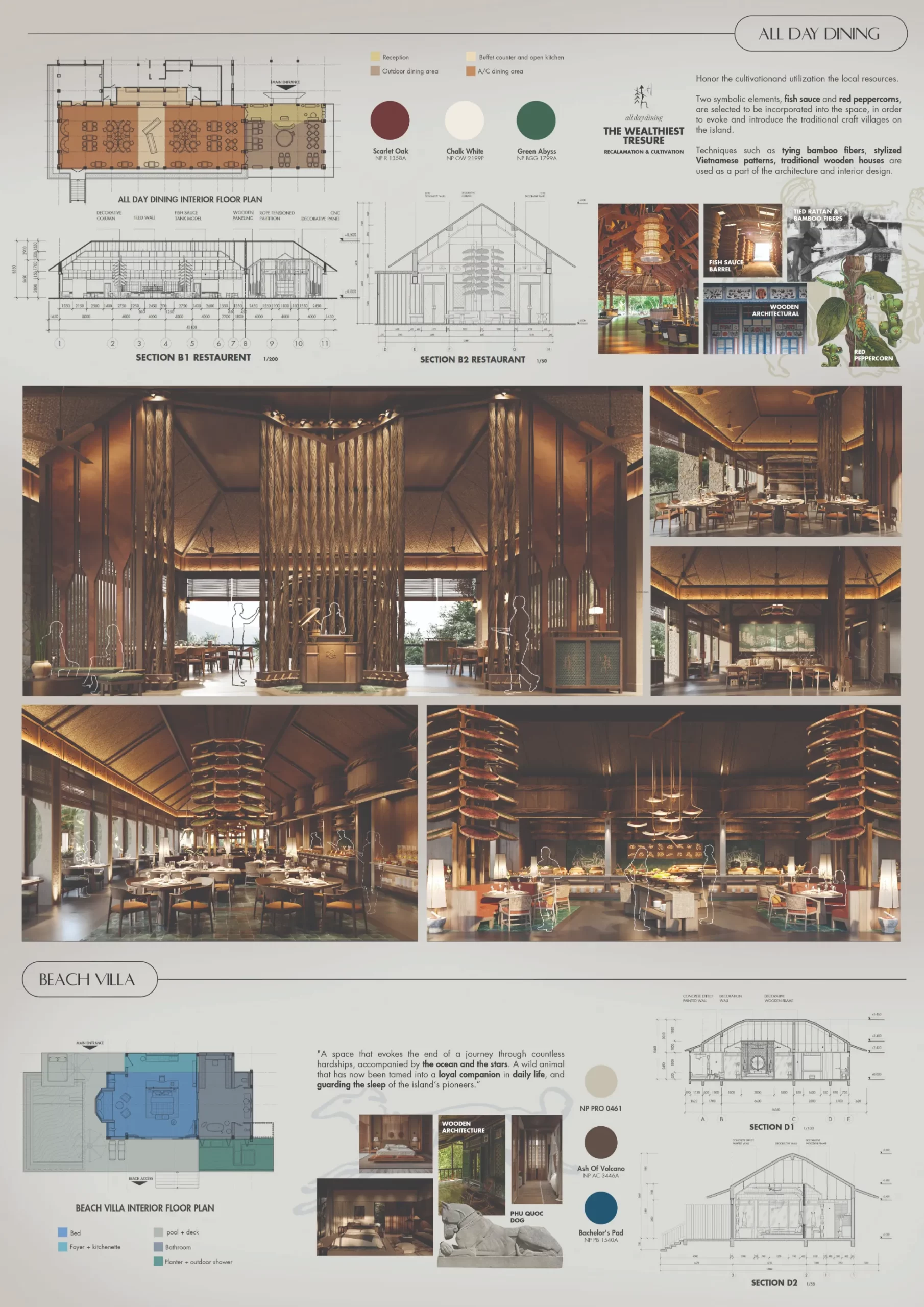
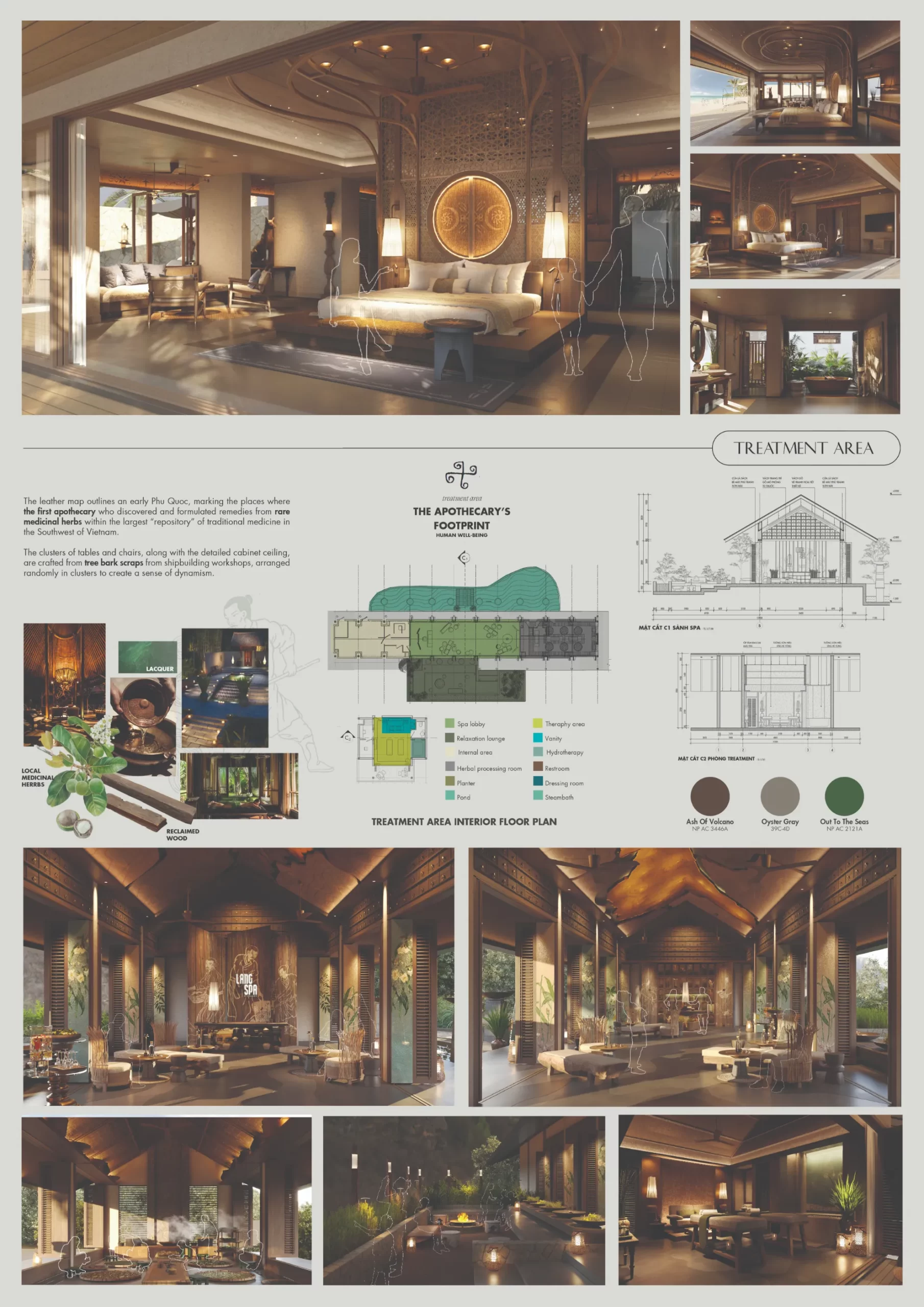
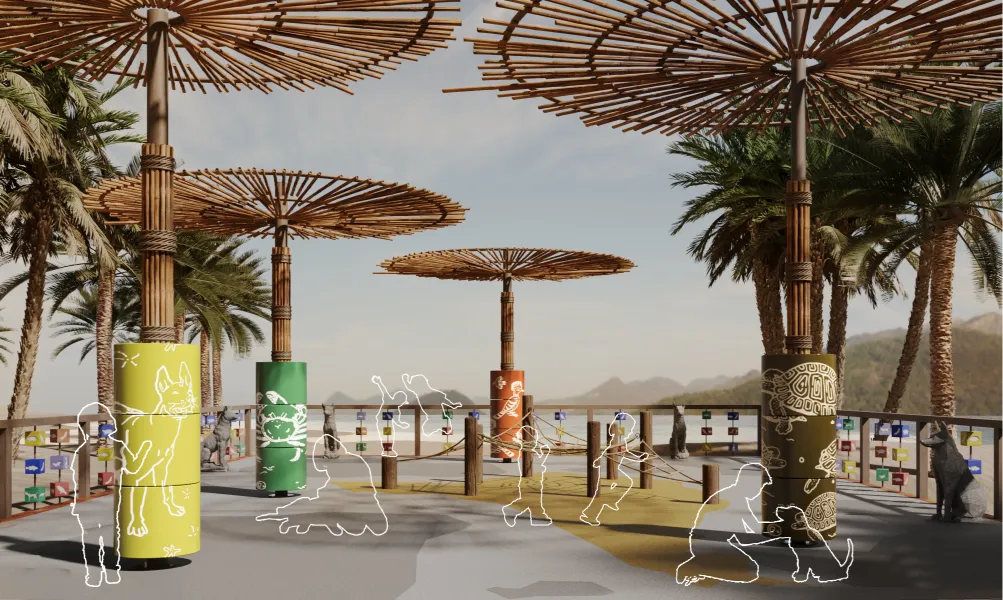
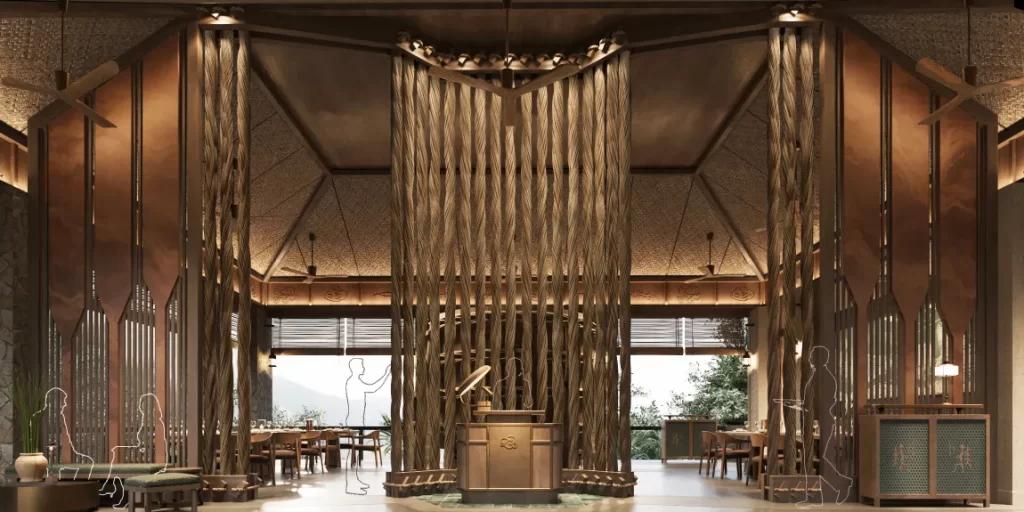
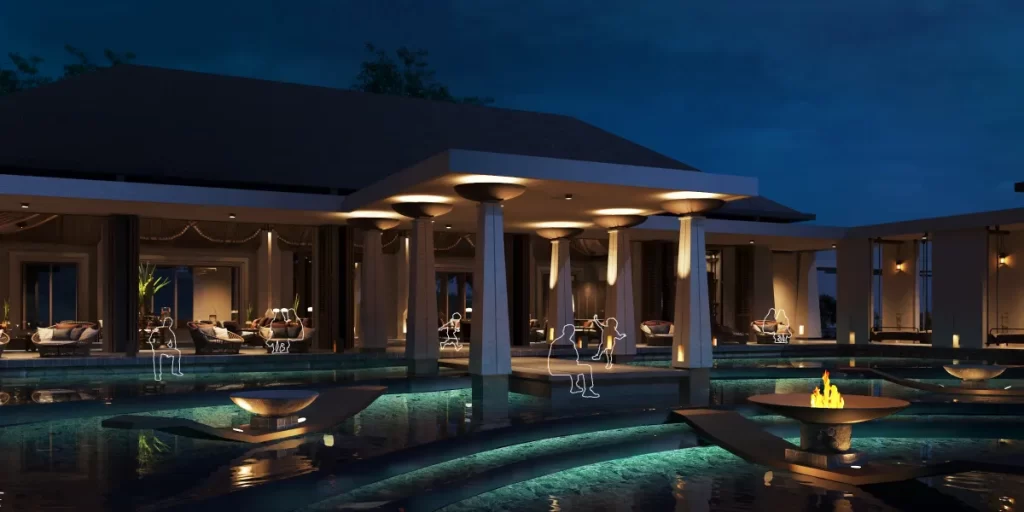
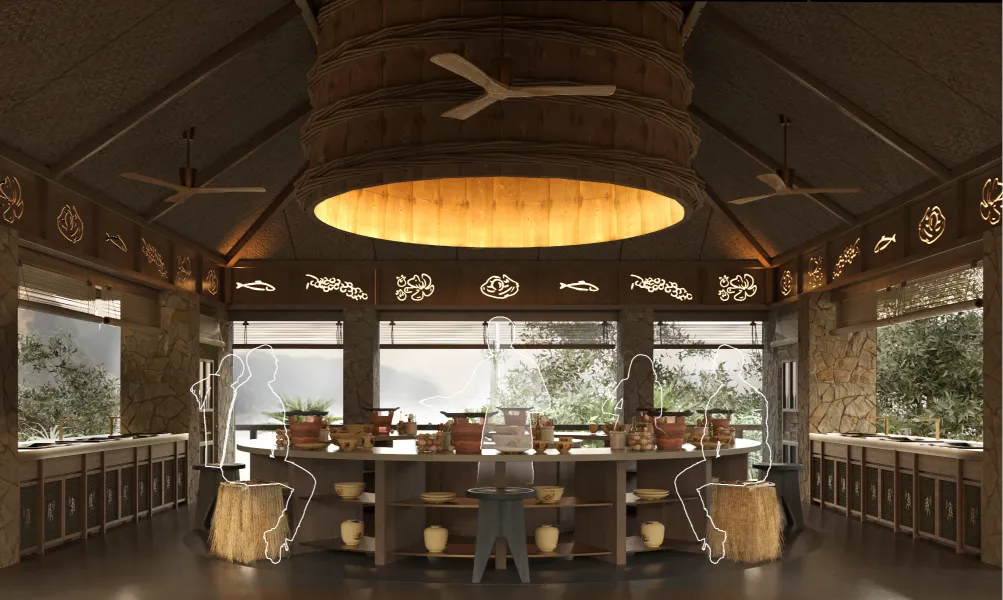
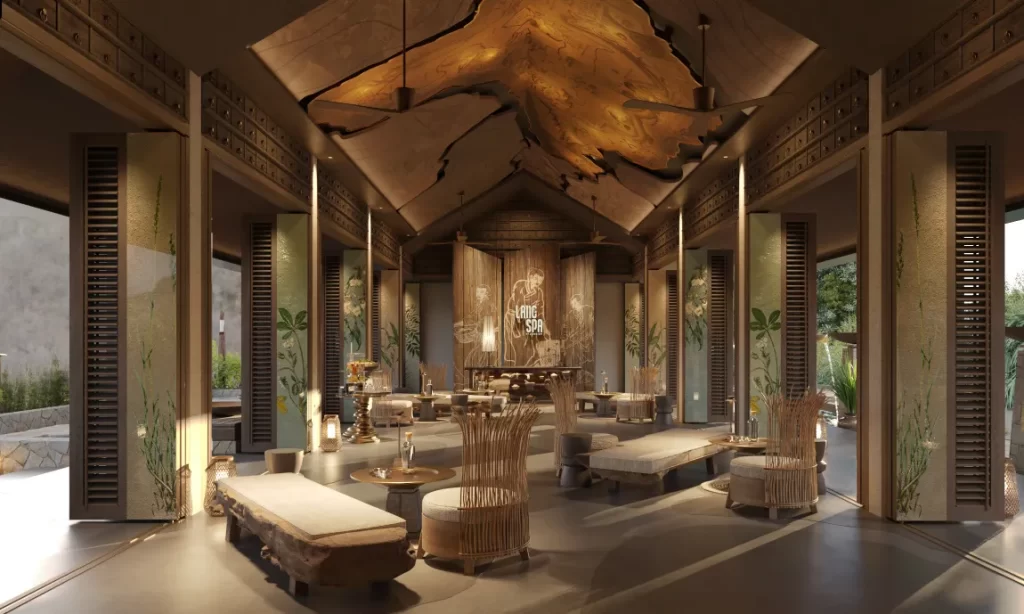
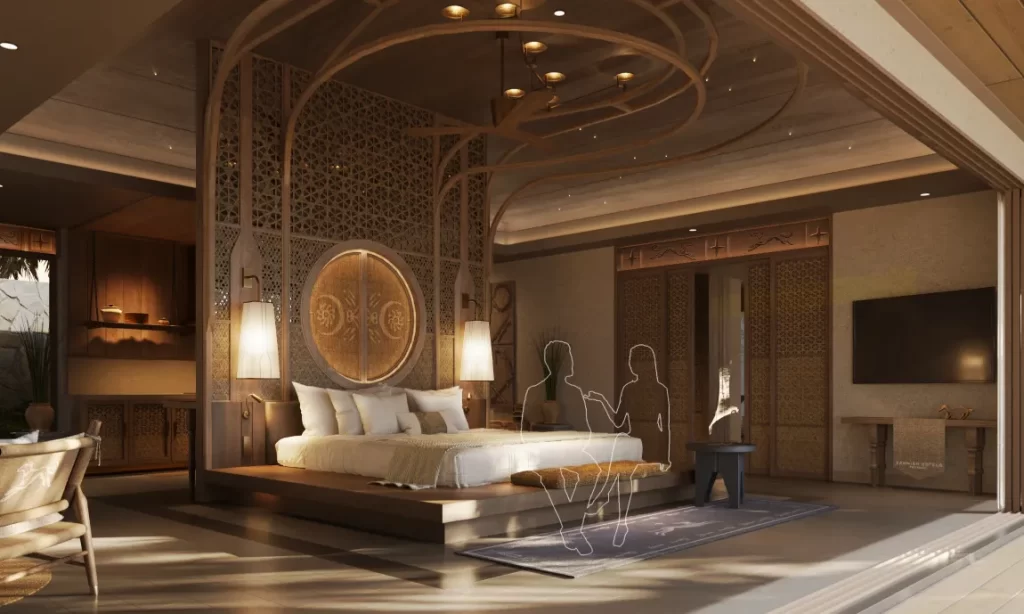
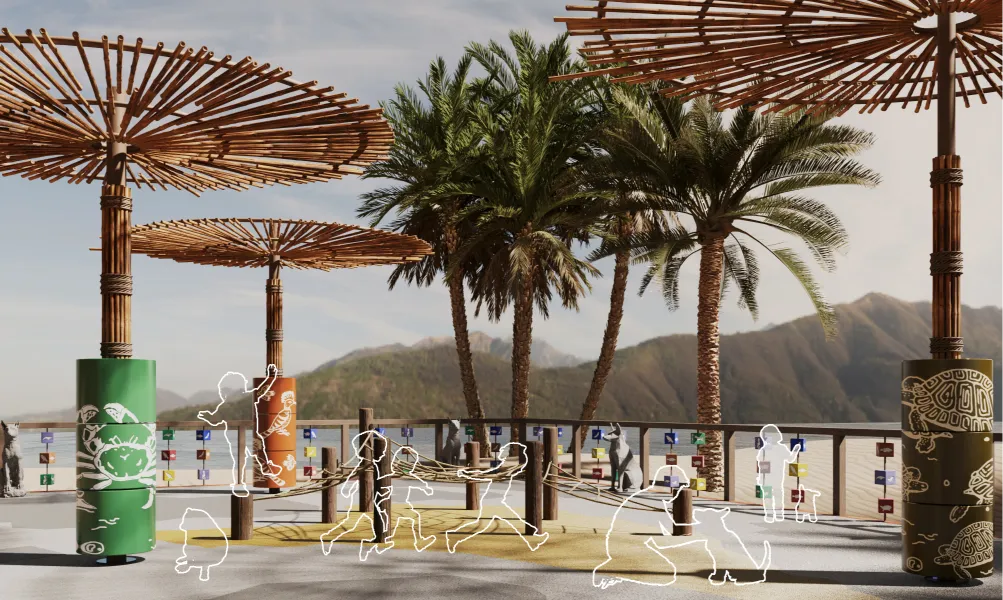
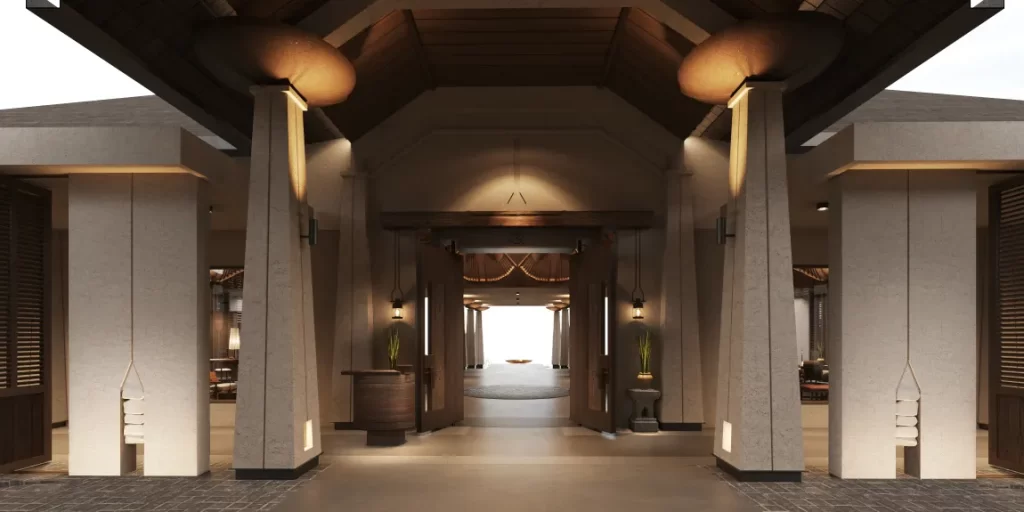
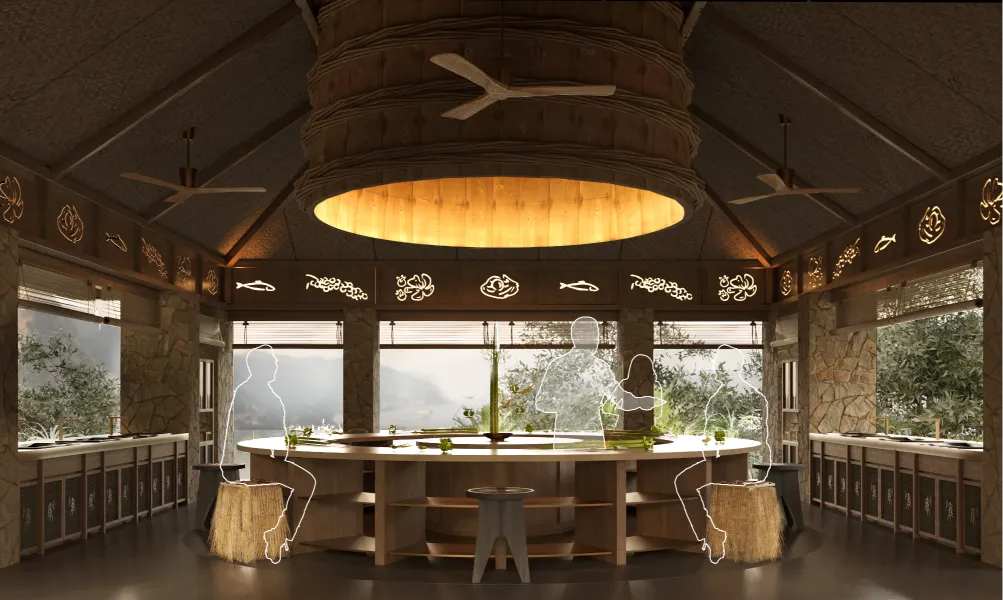
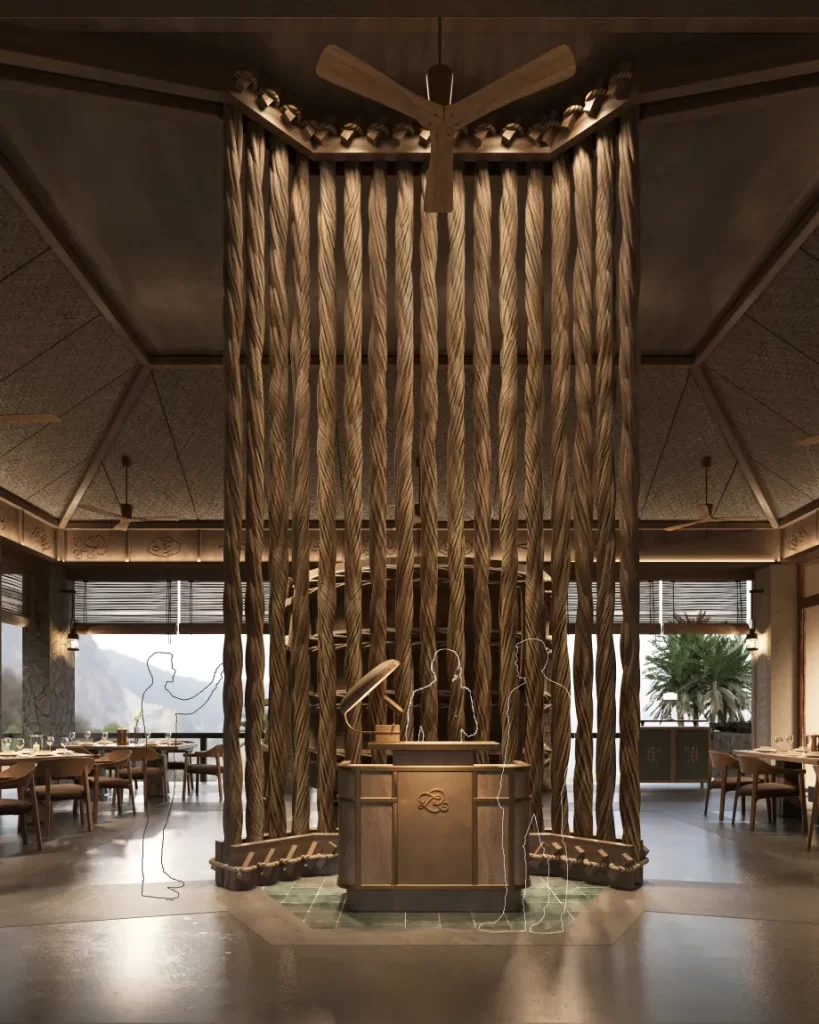
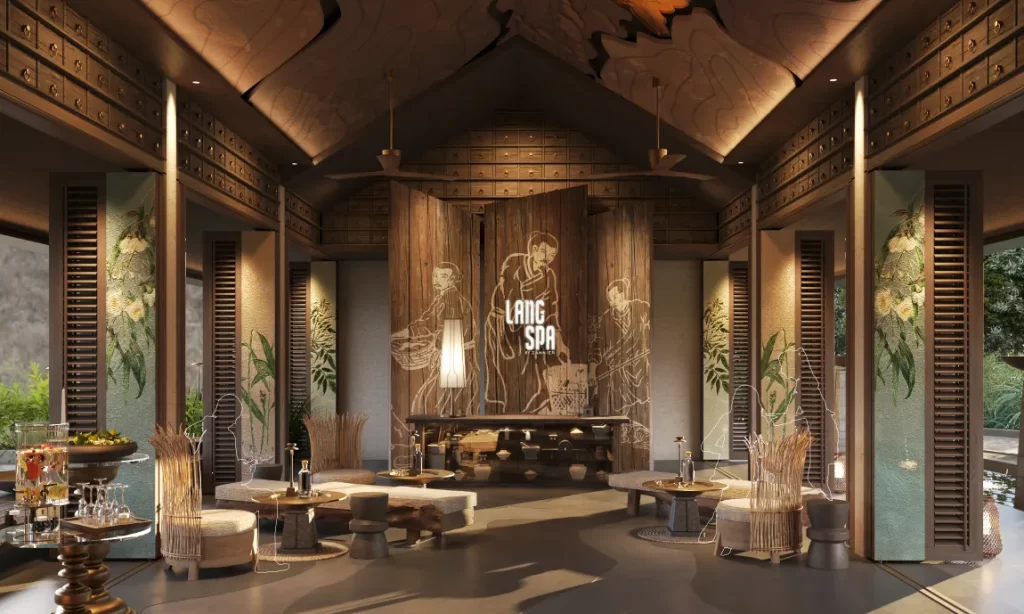
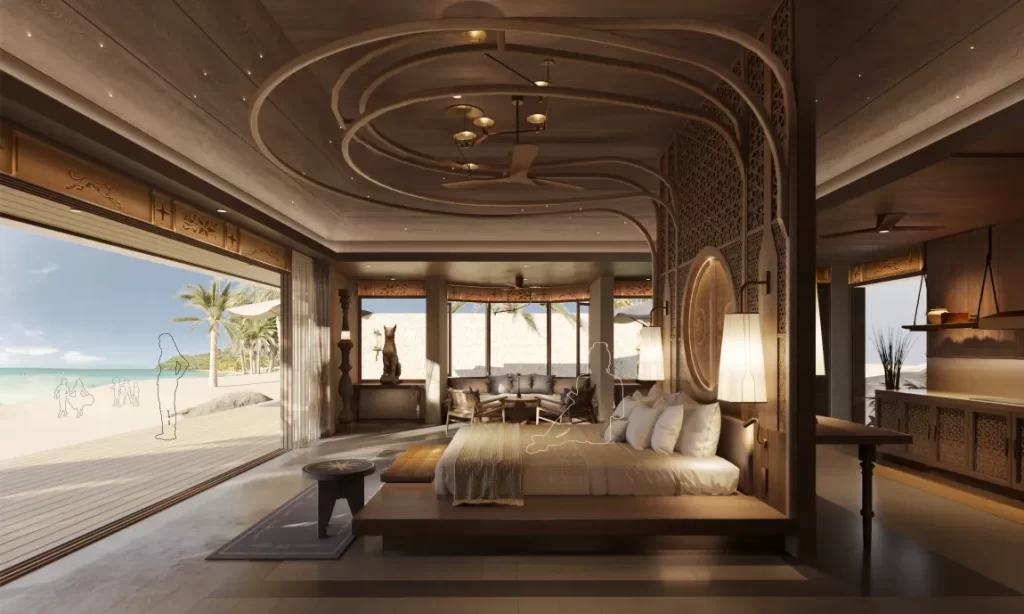
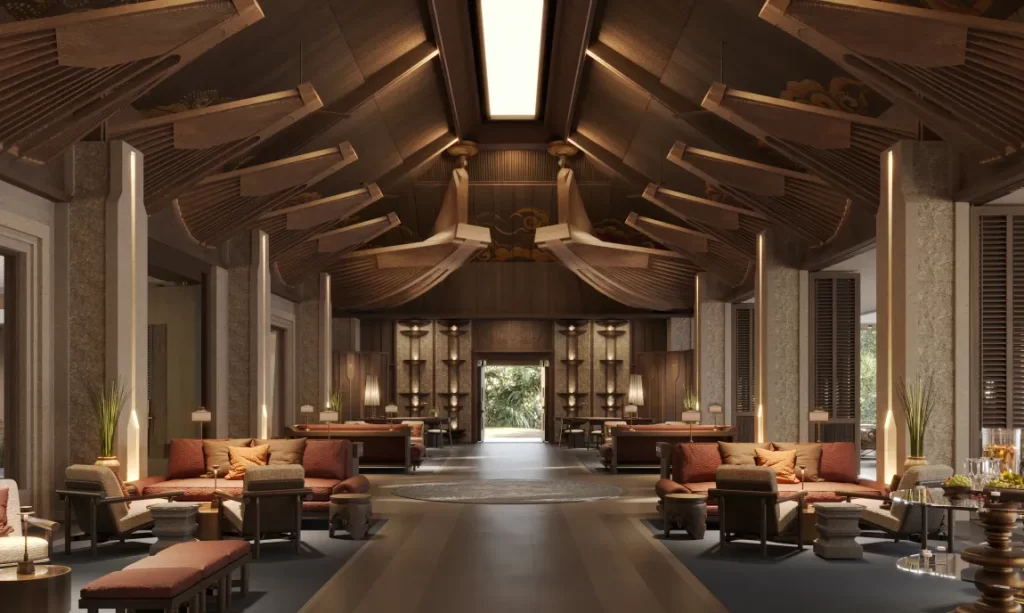
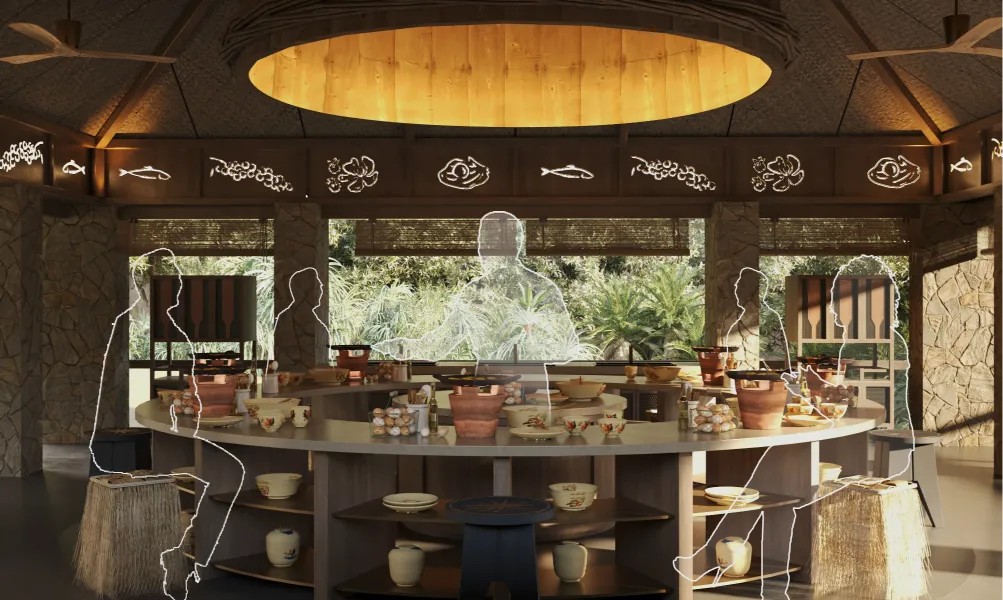
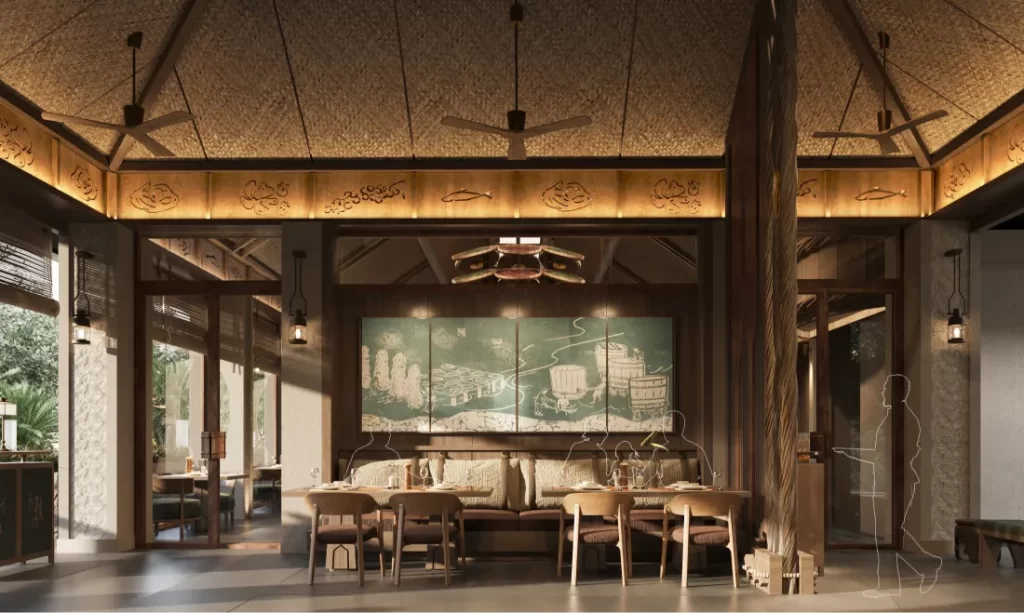
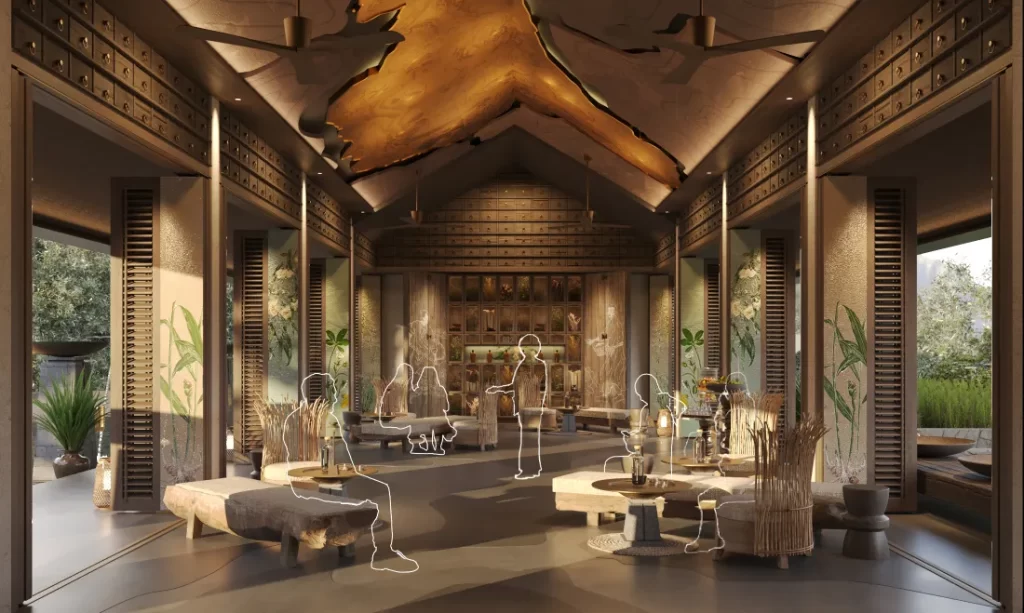
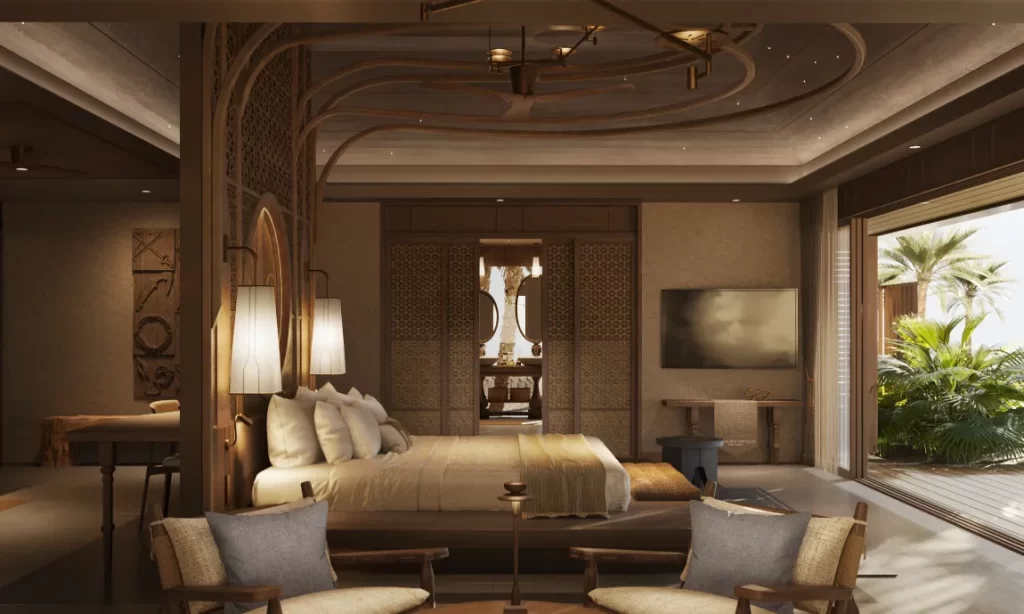
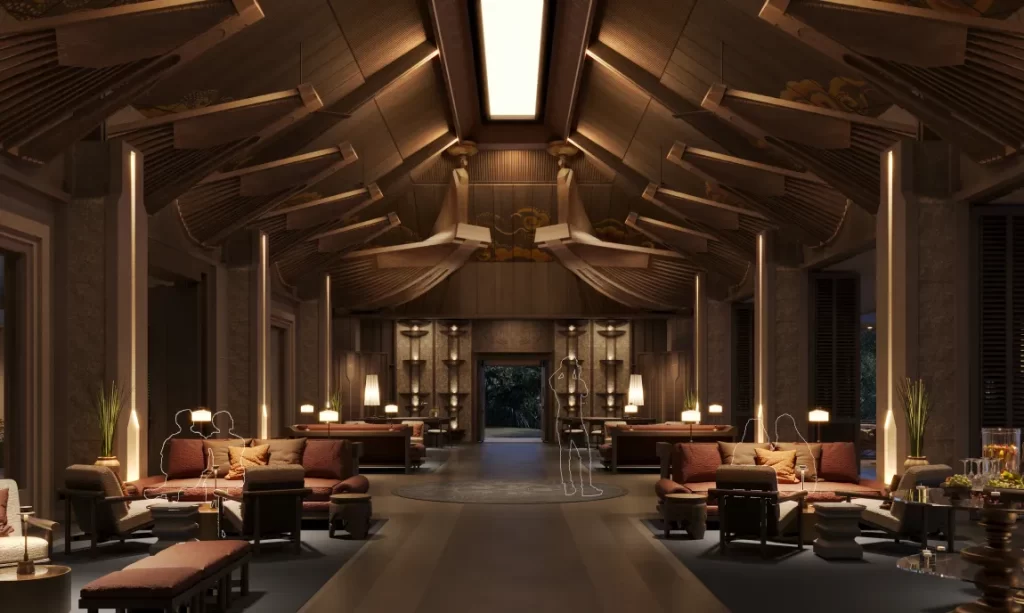
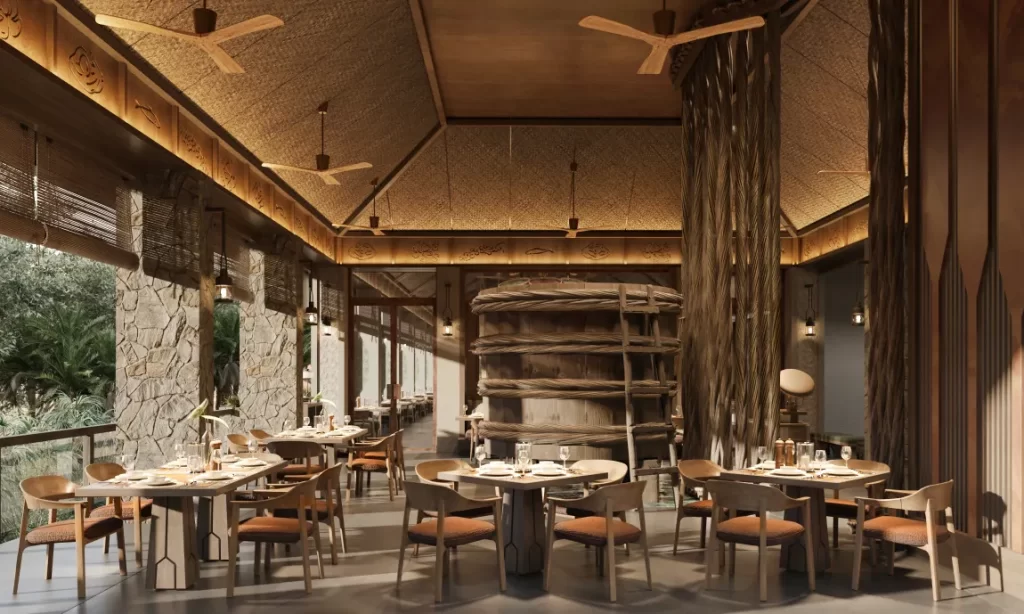
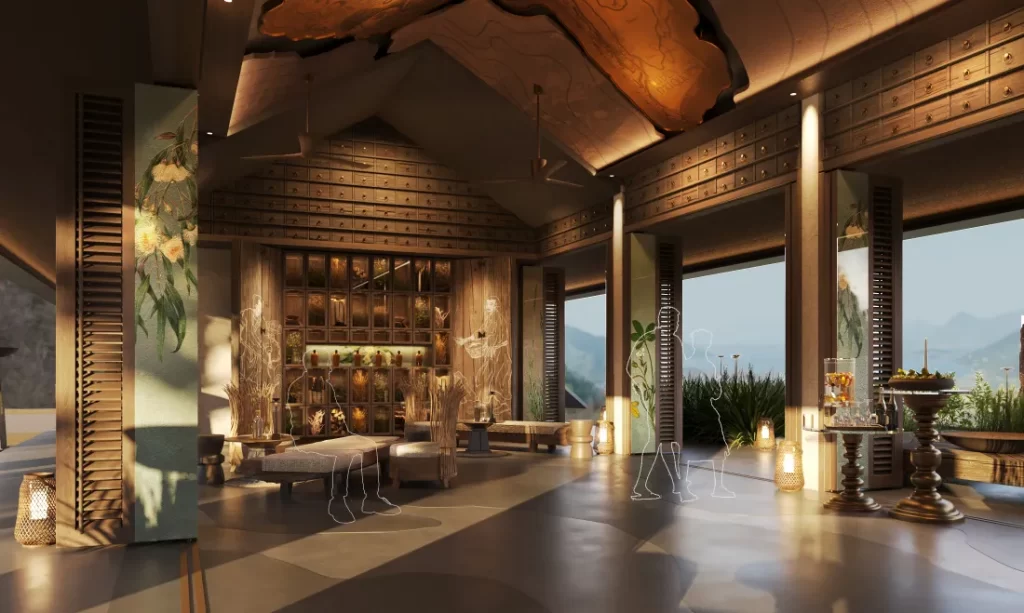
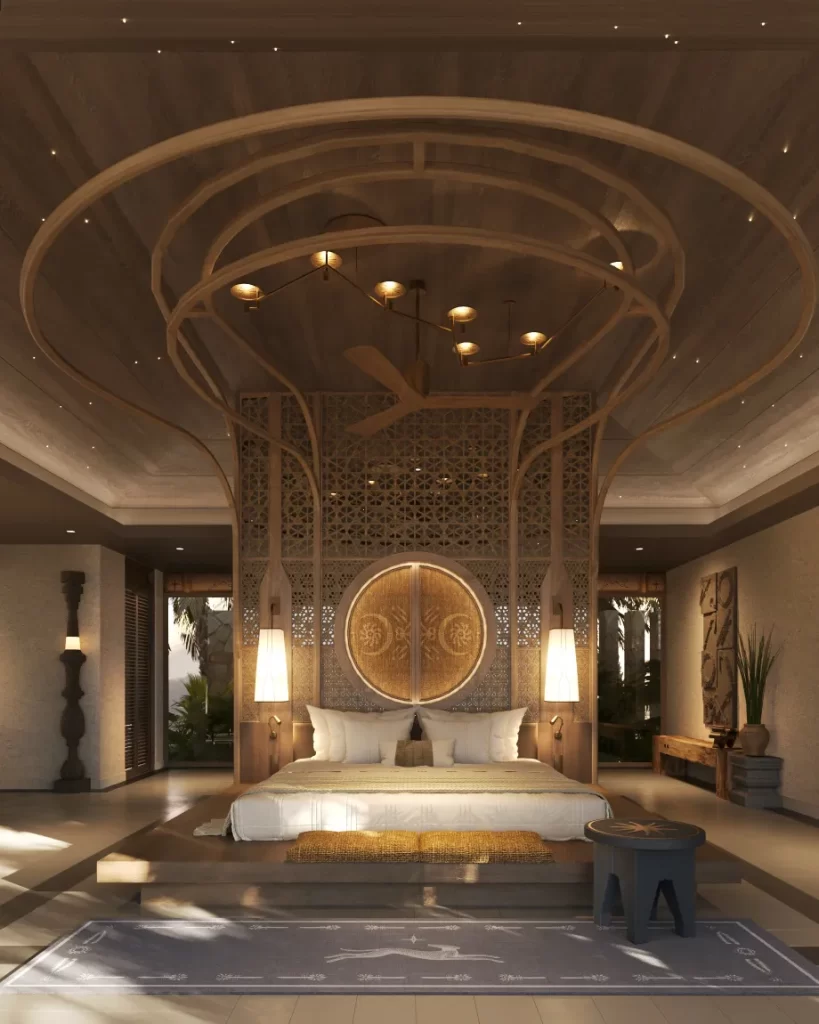
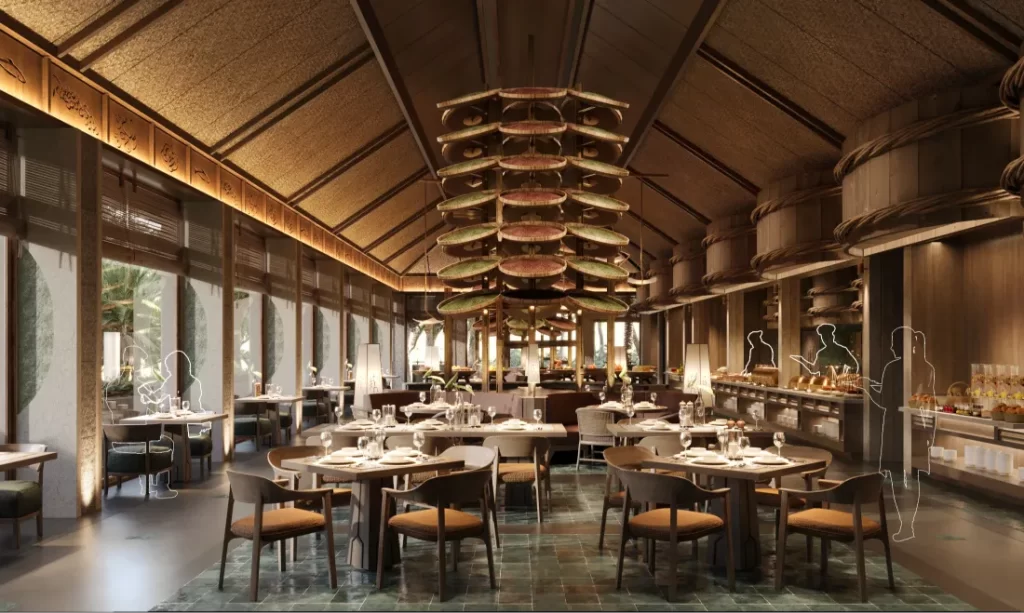
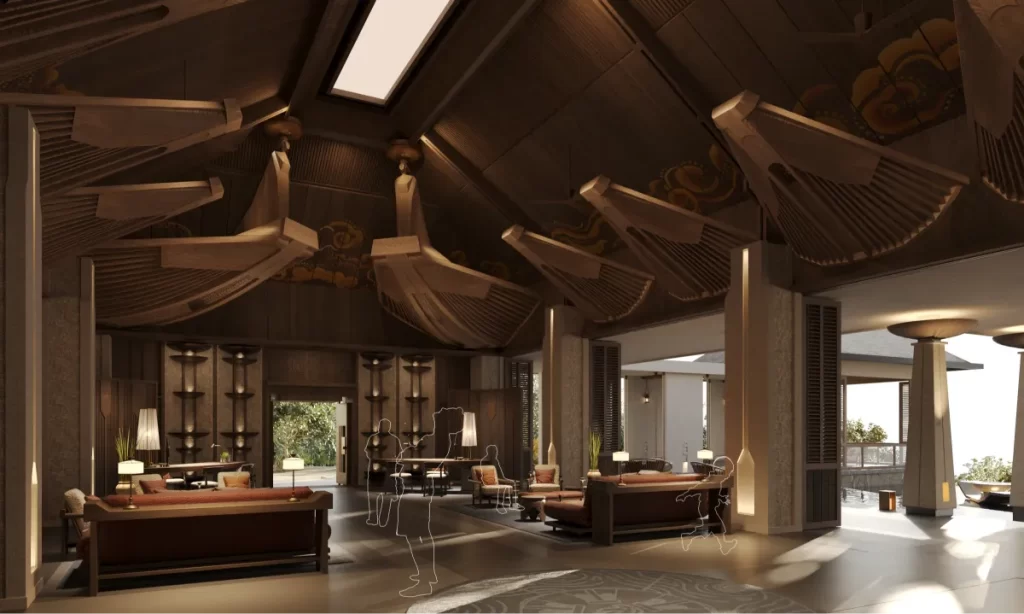
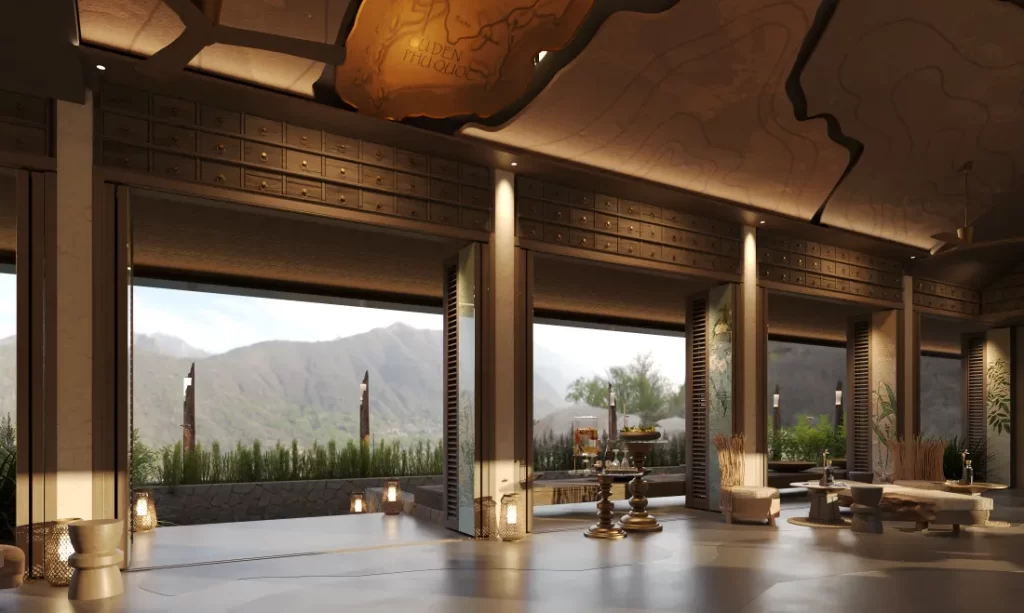
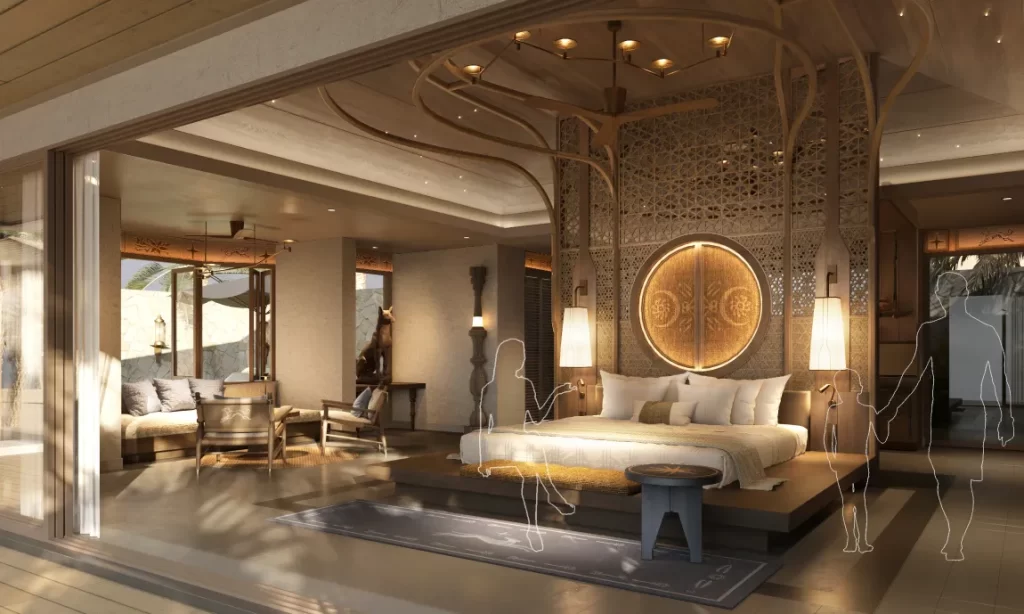
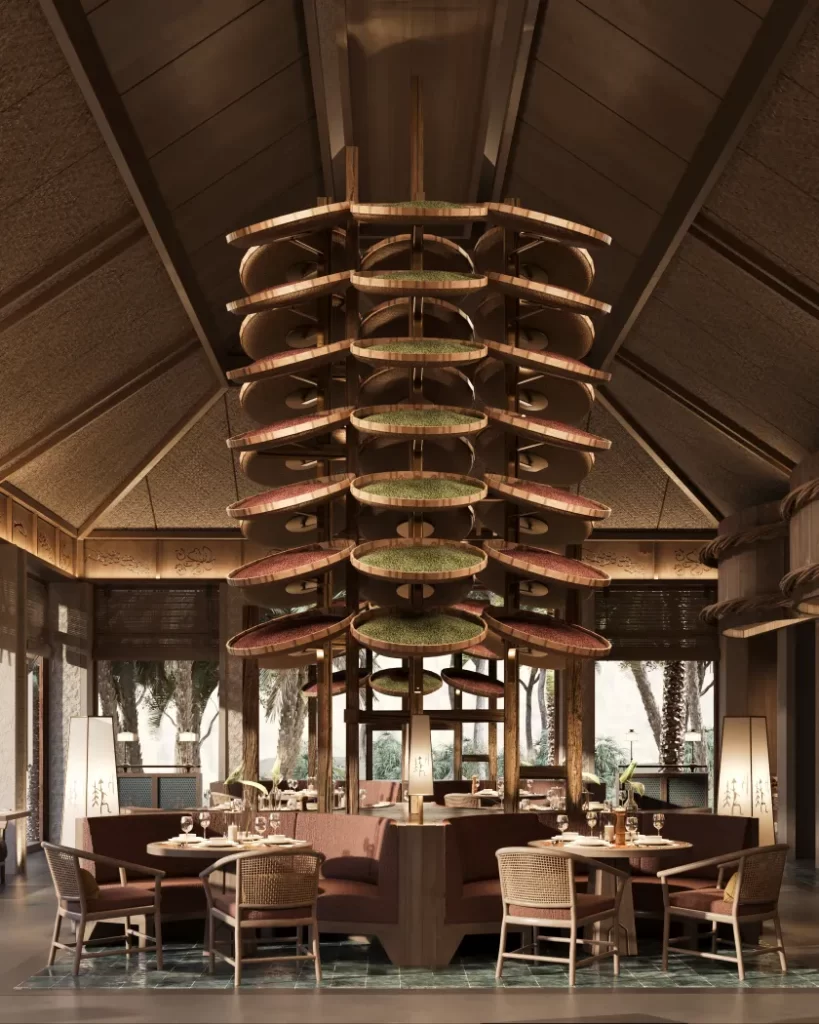
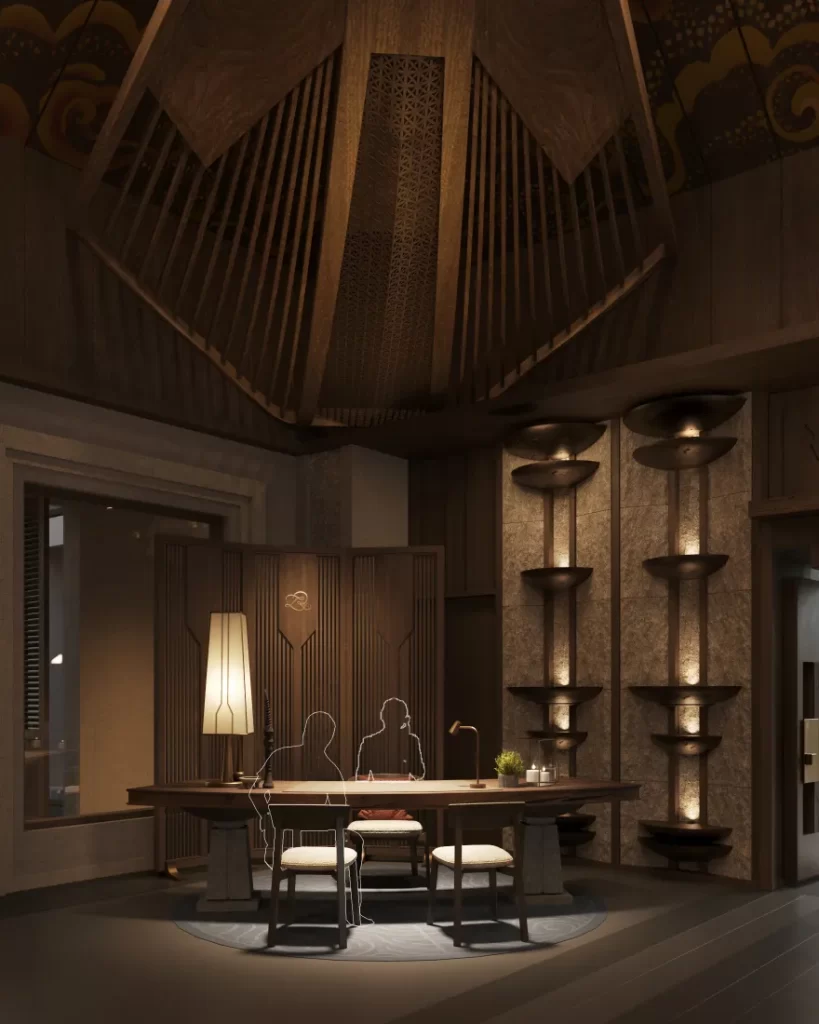
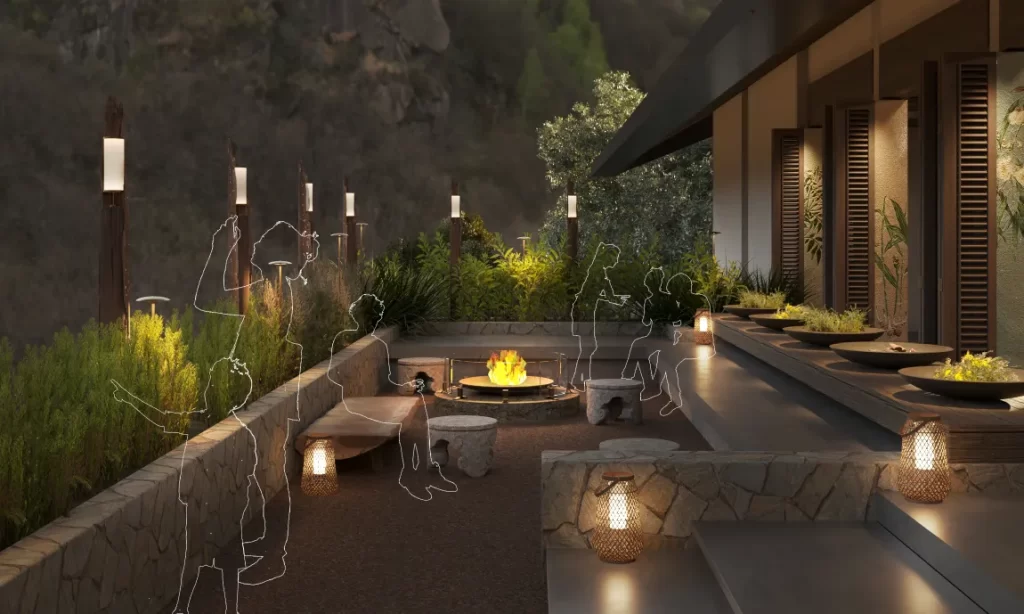
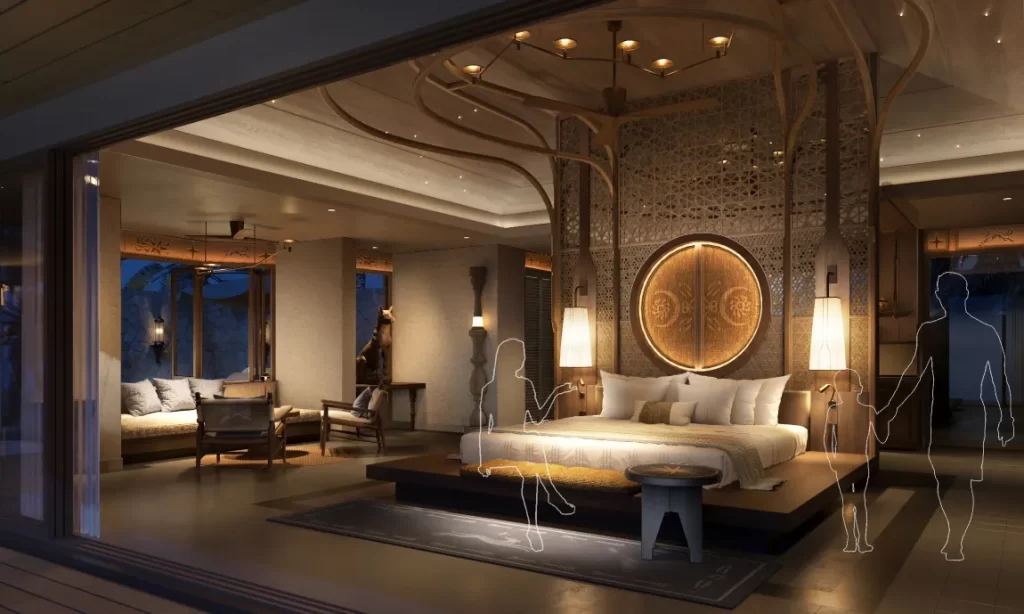
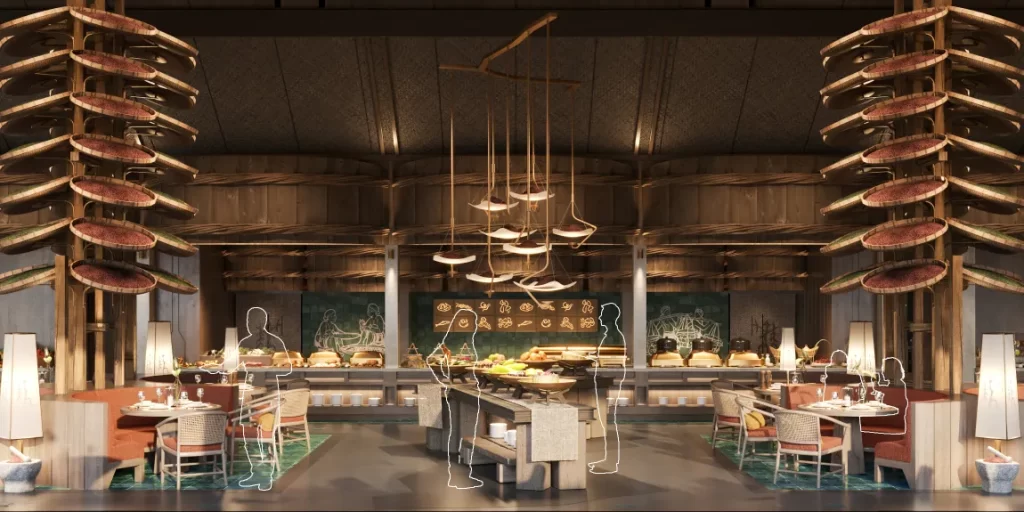
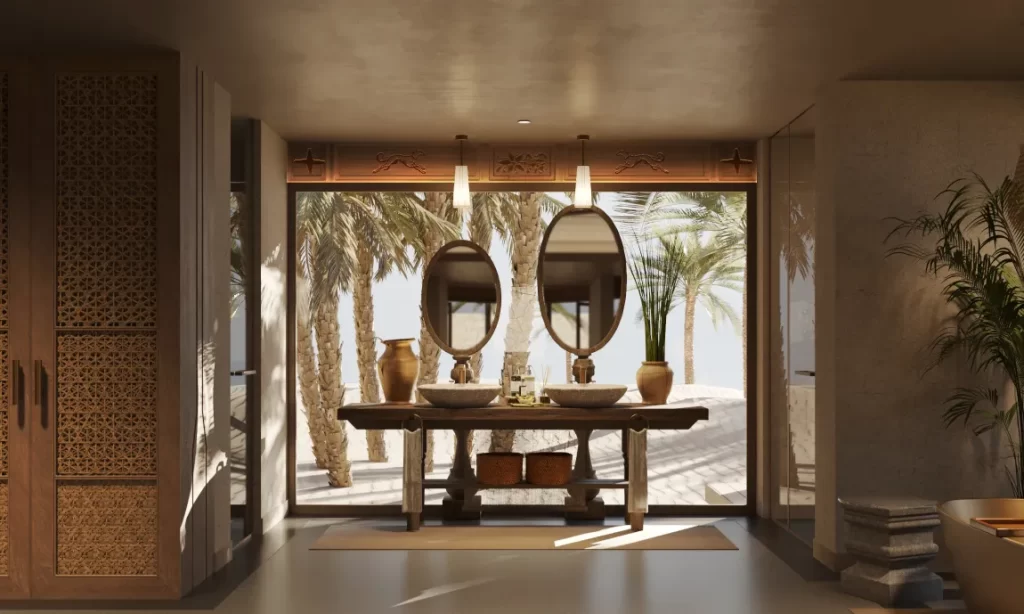
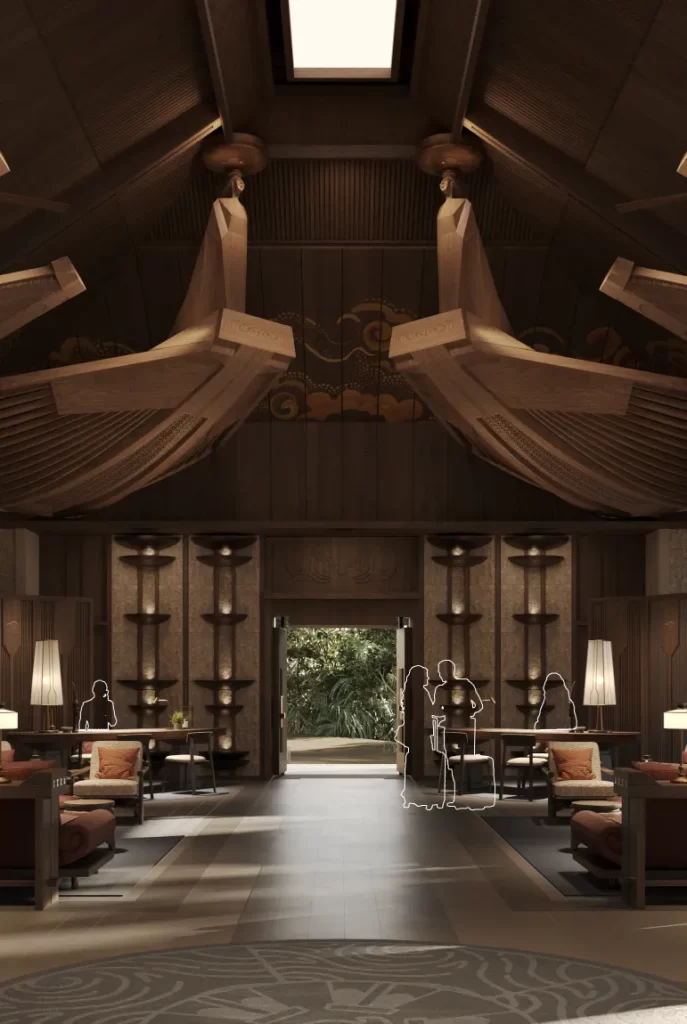
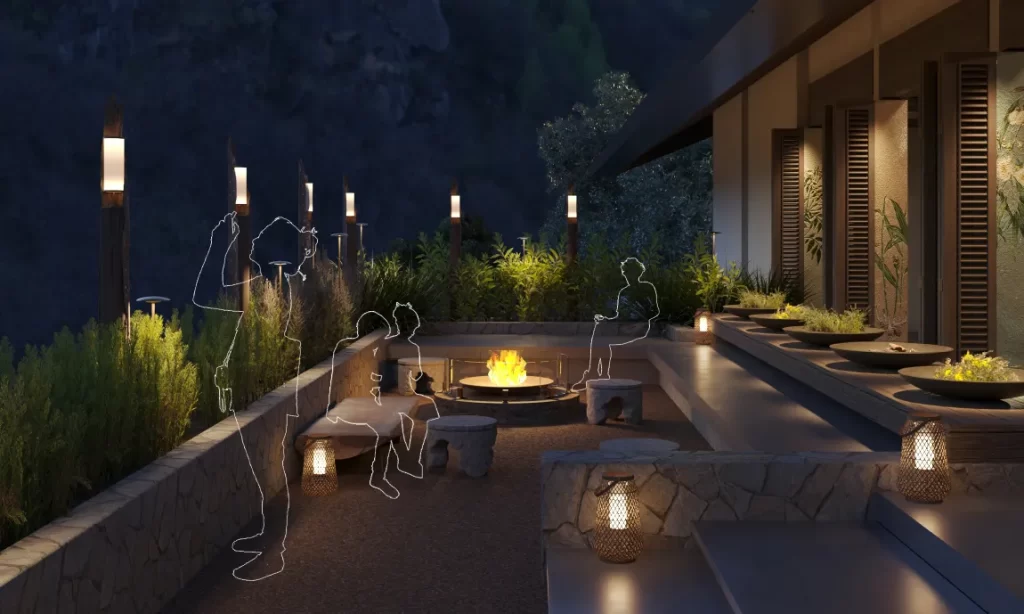
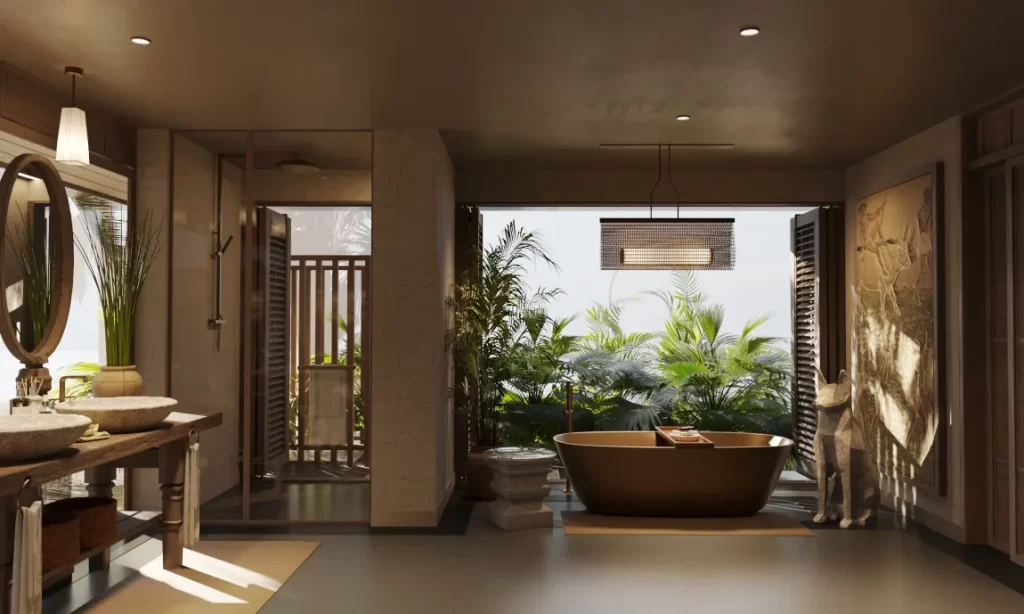
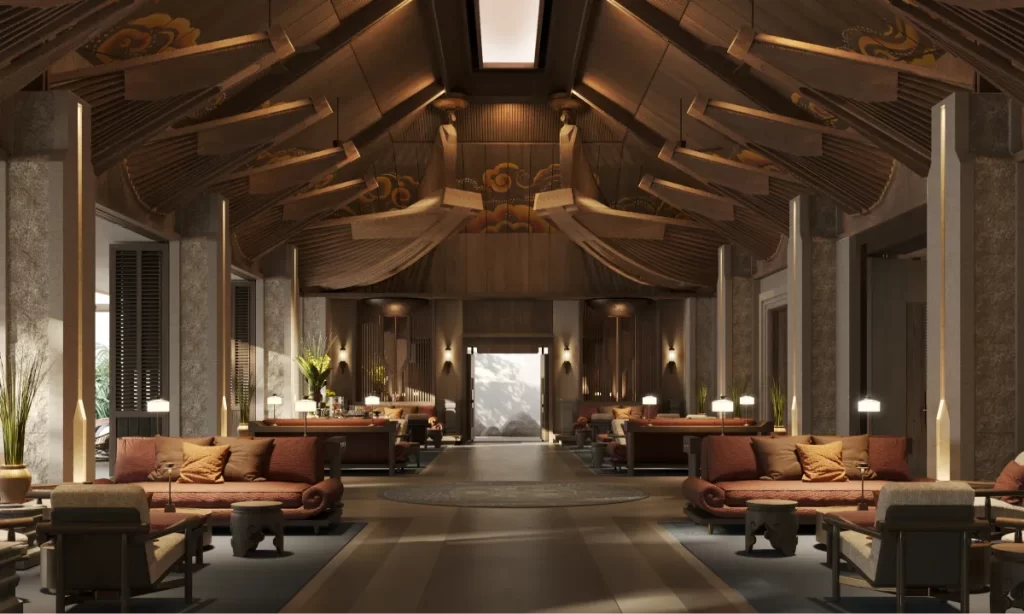
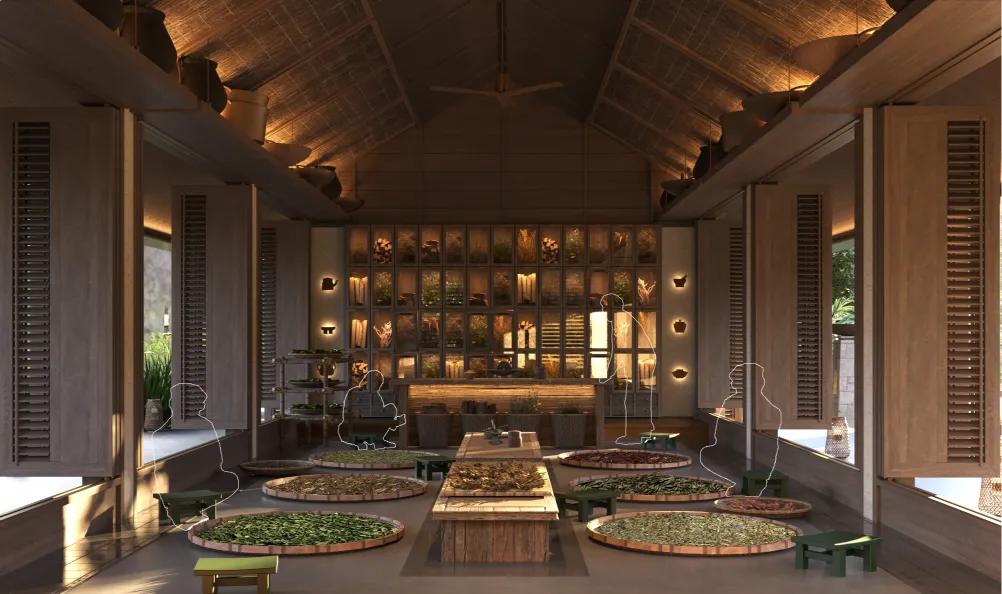
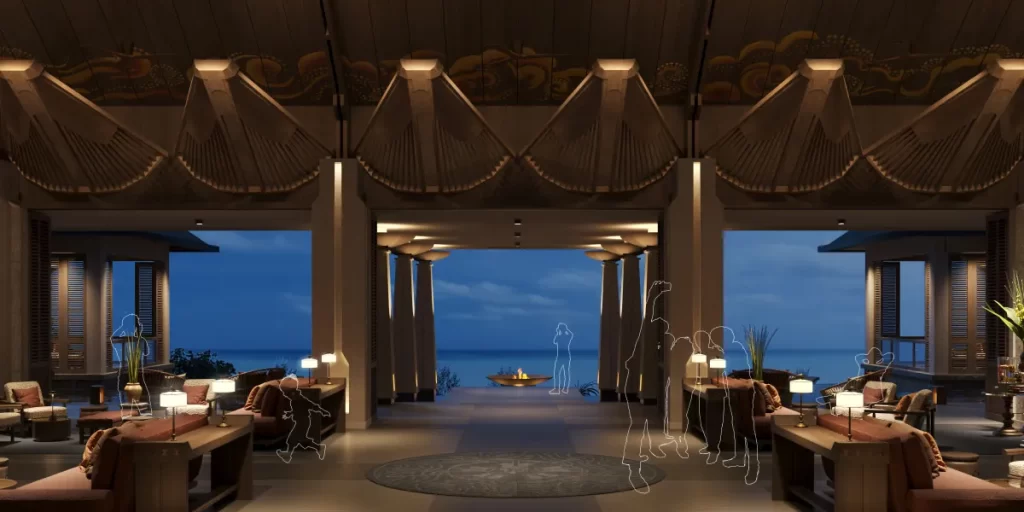
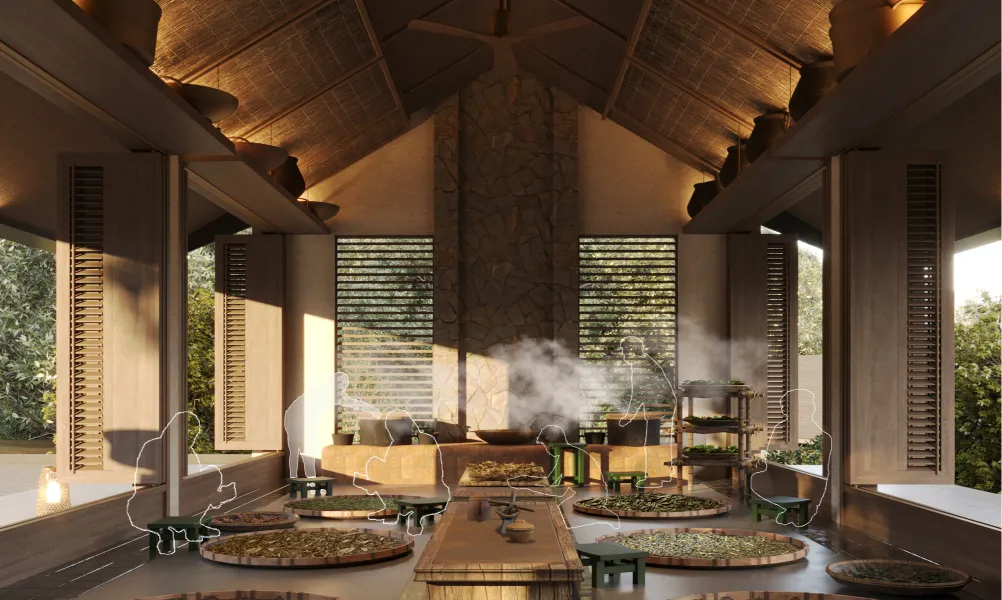
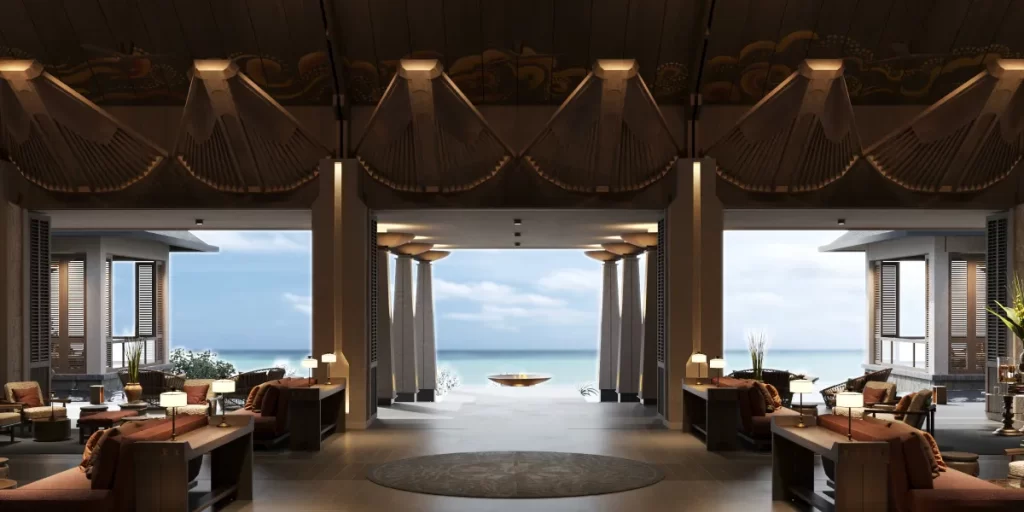
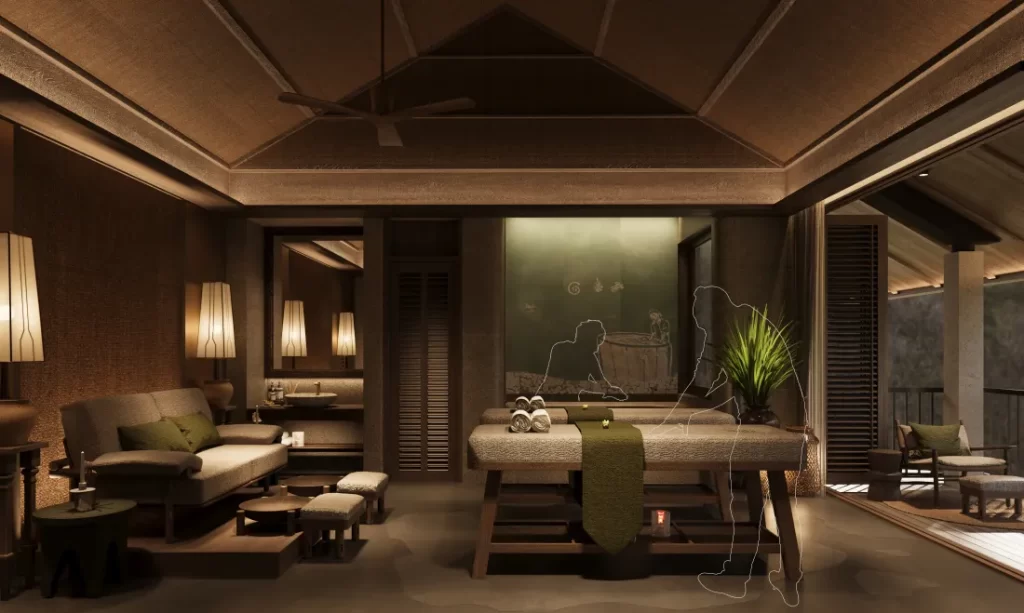
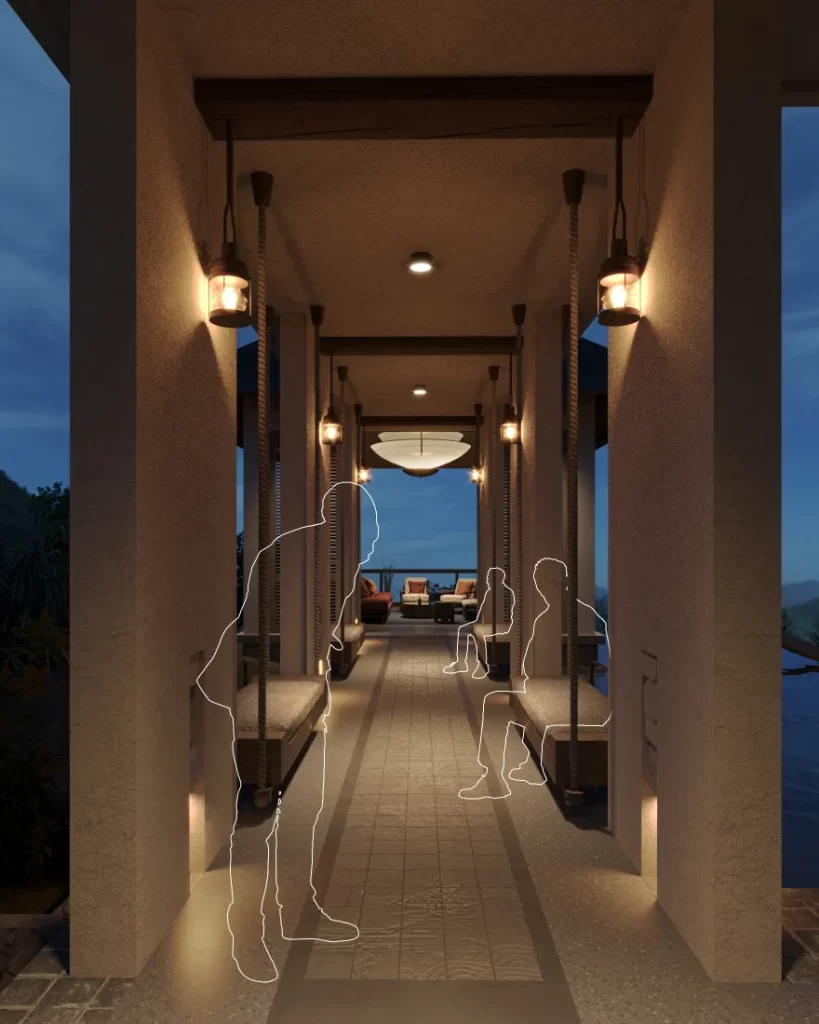
Showcase your design to an international audience
SUBMIT NOW
Image: Agrapolis Urban Permaculture Farm by David Johanes Palar
Top
PHU QUOC RESORT PROBLEM STATEMENT Phu Quoc, an island located in the south of Vietnam, has emerged as a significant economic driver for the nation, widely recognized as the "Island of Tourism" and the "International Island". Although tourism and local communities have only begun to develop over the past thirty years, large-scale investments from domestic corporations and foreign entities have rapidly transformed the island. However, Phu Quoc now faces an alarming cultural decline, as an overwhelming number of resorts and entertainment complexes built with exotic Western concepts increasingly dominate the island. Meanwhile, local identities and the sustainable development of indigenous communities are receiving diminishing attention. DESIGN DIRECTION By incorporating local folktales, this project illustrates how each region around the world can adapt its unique stories into spatial design, reflecting and weaving together the region’s natural and social characteristics. To embrace local elements while addressing the global context. In doing so, the project aims to preserve the valuable traditions of the local community, contribute to the social welfare of the islanders. Also foster economic development, and introduce the island’s emerging culture to the world. DESIGN CONCEPT Four stories of the establishment for the island’s civilization are selected to be incorporated into four main spaces, each representing a distinct characteristic, collectively creating a comprehensive picture of the island's culture. The First Step – Call To Prayer The Second Step – Reclamation & Cultivation The Third Step – Animal Domestication The Fourth Step – Human Well-being Moreover, the spaces in this project aim to create a sense of connect where customers can interact with the local people, listen to their stories about the island, and immerse themselves in the daily way of life. Ultimately, the design of this resort serves as a bridge to spark curiosity and interest. At its core, it encourages visitors to want to witness the cultural characteristics and traditional crafts firsthand outside of the resort, contributing to the growth of local tourism. ENDING Although Phu Quoc is a relatively new hotspot for tourists, the awareness of cultural preservation is genuine. The culture of a region is a blend of social and natural elements that cannot be separated.
MYTHOLOGY OF THE FIRST ISLANDER
The Main Lodge Area -will tell the story of the tradition of offering prayers for peace and safety.
All-Day Dining Restaurant represents the products of the land cultivation process, showcasing local specialties.
Multi-purpose Workshop Area is used to engage the local people to teach the customers about the island’s art-craft and food tutor.
The wild animal has been tamed into a loyal companion.
The Beach Villa will honor the story of the islander’s settlement and the domestication of the Phu Quoc dog – one of Vietnam's Four Sacred Dogs – guarding the sleep of the pioneers.
Beach Children’s Playground – representing daytime interaction – uses an edutainment approach that allows children to play and learn about the island’s unique animals. This space also enables the Phu Quoc puppies to interact with visitors.
The Treatment Area highlights the abundance of the Phu Quoc National Forest – the largest herbal medicine treasure in Southwestern Vietnam, and the first island herbalist who cared for the well-being of the island’s residents.
This challenge is not unique to this southern island of Vietnam; it is a global concern, particularly in regions where local identities have not yet been fully established.
Therefore, to reach out to the world and face great waves, we must first anchor ourselves firmly in the
deep roots of our local heritage.












































